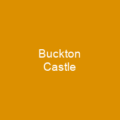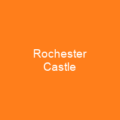The word castle is derived from the Latin word castellum, which is a diminutive of the word castrum, meaning ‘fortified place’ The term castle was introduced into English shortly before the Norman Conquest to denote this type of building. castles were not communal defences but were built and owned by the local feudal lords, either for themselves or for the monarch.
About Castle in brief

The castle was also used to control the local populace and important travel routes, and rural castles were often situated near features that were integral to life in the community. Many northern European castles were originally built from earth and timber, but had their defences replaced later by stone. Some grand castles had long winding approaches intended to impress and dominate their landscape. Early castles often exploited natural defences, lacking features such as towers and arrow slits and relying on a central keep. While castles continued to be built well into the 16th century, new techniques to deal with improved cannon fire made them uncomfortable and undesirable places to live. As a result, true castles went into decline and were replaced by artillery forts with no role in civil administration, and country houses that were indefensible. From the 18th-century onwards,there was a renewed interest in castles with the construction of mock castles, part of a romantic revival of Gothic architecture, but it had no military purpose. These mock castles were designed to look like real castles but they had nomilitary purpose and were not considered to be castles at all. The term ‘castle’ is used to refer to structures as diverse as hill forts, country houses, and fortified settlements, though there are many similarities among these types of construction.
You want to know more about Castle?
This page is based on the article Castle published in Wikipedia (as of Nov. 30, 2020) and was automatically summarized using artificial intelligence.







